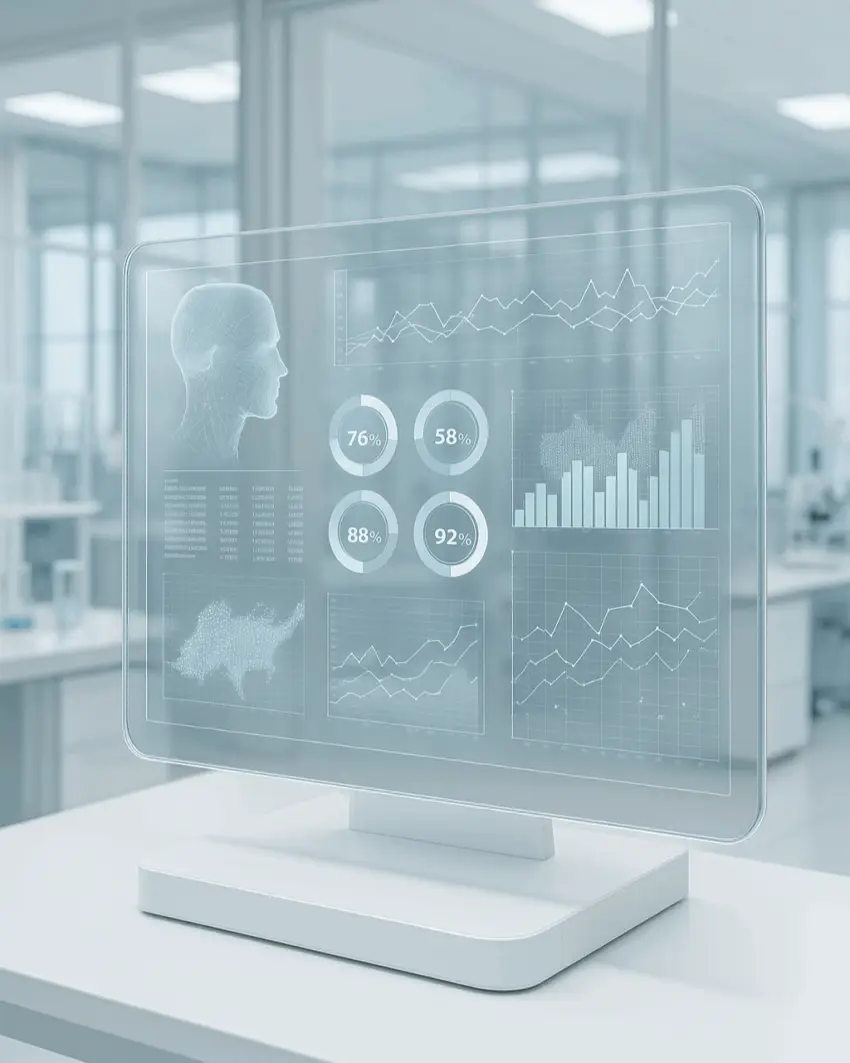In recent decades, Decision Support Systems (DSS) have rapidly evolved across industries, including the fundamental sciences. Yet, despite the progress, there is still ample room for innovation. New tools, smarter algorithms, and more intuitive interfaces are in demand—especially in the age of artificial intelligence, quantum computing, high-performance computing (HPC), and massive-scale data processing.
The DSS market is expanding, and so is the need for systems that can analyze, simulate, and guide complex decisions in research and industry. For startups, technologists, and scientists, this presents a valuable opportunity: to create entirely new DSS platforms or to enhance existing ones with modern capabilities.
This post explores many of the active DSS tools used in physics, chemistry, biology, mathematics, and cross-disciplinary research. Whether you’re a researcher looking for the right decision support platform, or an innovator exploring startup directions and gaps in the market, this curated list can serve as both a practical reference and a source of inspiration.
Decision Support Systems (DSS) are computational frameworks that combine data, models and expert knowledge to guide research decisions. In fundamental science, DSS help researchers run simulations, mine large datasets, and apply domain expertise—accelerating discovery and reducing time to insight.
DSS fall into three broad categories:
- Model-driven DSS use mathematical or physical simulations to explore “what-if” scenarios. Examples include multiphysics platforms (e.g. COMSOL, ANSYS) and molecular dynamics engines (GROMACS, LAMMPS) that let you optimize experiments before you ever set foot in the lab.
- Data-driven DSS focus on gathering and analyzing large volumes of data. In astronomy or particle physics, they detect patterns in petabytes of measurements; in biology, they turn raw gene sequences into actionable insights through bioinformatics pipelines.
- Knowledge-driven DSS encode expert rules or ontologies—such as chemical synthesis guidelines or curated biological pathways—to suggest next steps, from reaction planning to hypothesis generation.
Together, these systems are enabling an era of AI-augmented research, where complex analyses happen in hours rather than years.
Physics
In physics, DSS shine as both simulation engines and data-analysis pipelines:
- Simulation platforms (COMSOL, OpenFOAM) let you tweak boundary conditions, materials or geometries and immediately see predicted outcomes—ideal for device design or fluid-dynamics research.
- Data pipelines (e.g. CERN’s ROOT framework, Python libraries) process massive experimental or observational datasets, flagging anomalies and guiding where to focus next.
- Real-time control tools (LabVIEW, EPICS) link sensors to simulation models, enabling live adjustments during experiments or missions.
On the space and environmental side, integrated DSS continuously fuse live satellite data with climate models, helping scientists forecast events—like extreme weather—days or weeks in advance.

Chemistry
Chemistry DSS accelerate the discovery of new molecules and processes:
- Quantum and molecular simulators (Gaussian, ORCA, AMBER) predict reaction energetics and material properties at the atomic scale.
- Cheminformatics platforms (RDKit, KNIME) mine large compound libraries, flagging candidates for synthesis or testing.
- Synthesis planners (Synthia, IBM RXN) propose step-by-step routes to build target molecules, complete with estimated success probabilities.
Generative AI tools now design novel drug-like compounds in days—dramatically cutting the cost and timeline of early-stage R&D. Cloud-based DSS suites make these capabilities accessible even to bootstrapped startups.
Biology
Biology is inherently data-driven, and DSS here combine analytics with curated knowledge:
- Bioinformatics workflows (BLAST, Galaxy, Bioconductor) transform raw sequencing or proteomics data into gene or protein insights.
- Structural prediction systems (AlphaFold) now provide hundreds of millions of protein structures, unlocking new avenues in drug design and molecular engineering.
- Knowledge graphs and ontologies (Gene Ontology, STRING) embed decades of expert curation, helping researchers interpret complex datasets and suggest experiments.
Emerging “virtual cell” platforms let you simulate entire cellular processes—bridging wet-lab and dry-lab workflows for faster hypothesis testing.
Mathematics
Although less obvious, DSS in mathematics support both applied and pure research:
- Computational engines (Mathematica, Maple, SageMath) combine symbolic algebra with numeric solvers, helping you test conjectures or model real-world systems.
- Optimization solvers (Gurobi, CPLEX) guide parameter selection in engineering applications, from logistics to energy systems.
- Automated theorem provers (Lean, Coq, emerging AI agents) check proofs and can even suggest next steps, assisting mathematicians with complex formal reasoning.
As these tools evolve, they’re becoming virtual collaborators—spotting patterns and offering insights that were once hidden in dense theory.
Cross-Disciplinary Trends
Across all disciplines, three trends stand out:
- AI and machine learning are being woven into physics, chemistry and biology models—yielding hybrid approaches that blend first-principles simulations with data-driven predictions.
- Cloud and HPC adoption means startups and small labs can tap into supercomputing-scale DSS without massive capital outlay.
- Open data and interoperability (FAIR principles, shared repositories) let DSS integrate diverse datasets—enabling, for example, workflows that combine climate, materials and genomic information in a single pipeline.
Conclusion
Decision Support Systems are no longer niche tools—they’re essential infrastructure across modern science. Whether simulating a quantum field, modeling a chemical reaction, analyzing a genome, or proving a mathematical theorem, DSS accelerate discovery by making complex decisions faster, smarter, and more reliable.
But with AI, HPC, quantum computing, and massive-scale data transforming the research landscape, today’s DSS will not be enough tomorrow. This shift opens up vast opportunities—not just for better tools, but for entirely new classes of systems that don’t exist yet.
For scientists, this guide is a practical starting point to find and apply the best-fit DSS in their domain. For innovators, it’s a launchpad: a map of where the current solutions succeed—and where they fall short. Every gap is a chance to build something impactful, scalable, and necessary.
In a world driven by knowledge, the systems that shape decisions are just as critical as the data behind them. The next breakthroughs in science may well come from those who design the platforms that guide them.
This blog post was written with the assistance of ChatGPT, based on ideas and insights from Edgar Khachatryan. Pictures generated by Sora and ChatGPT
